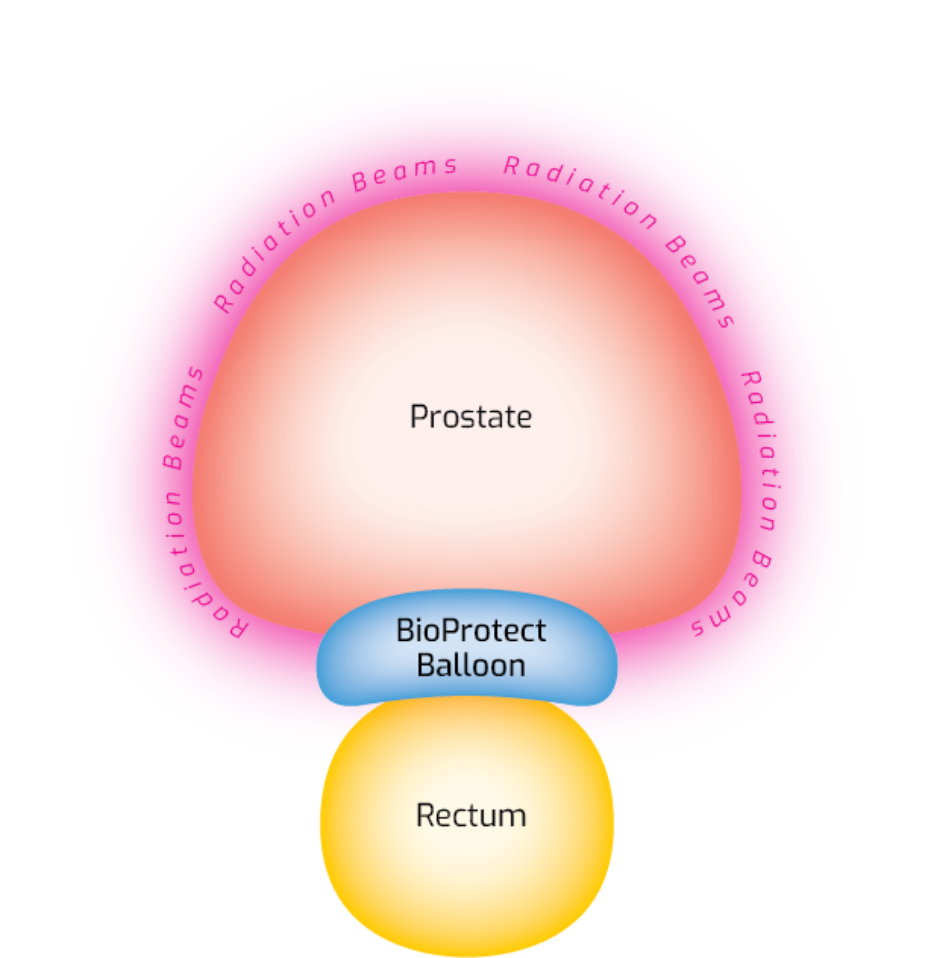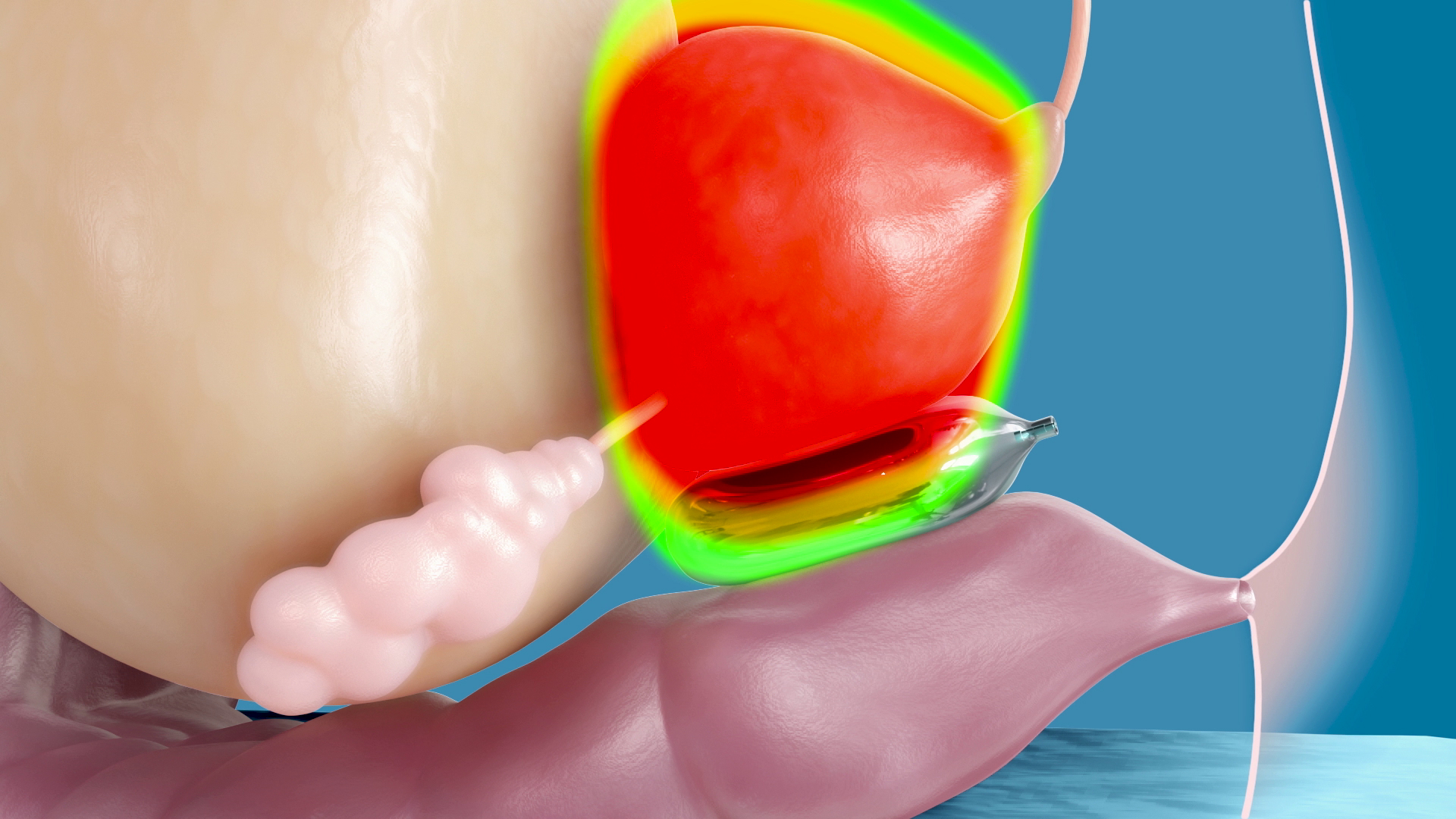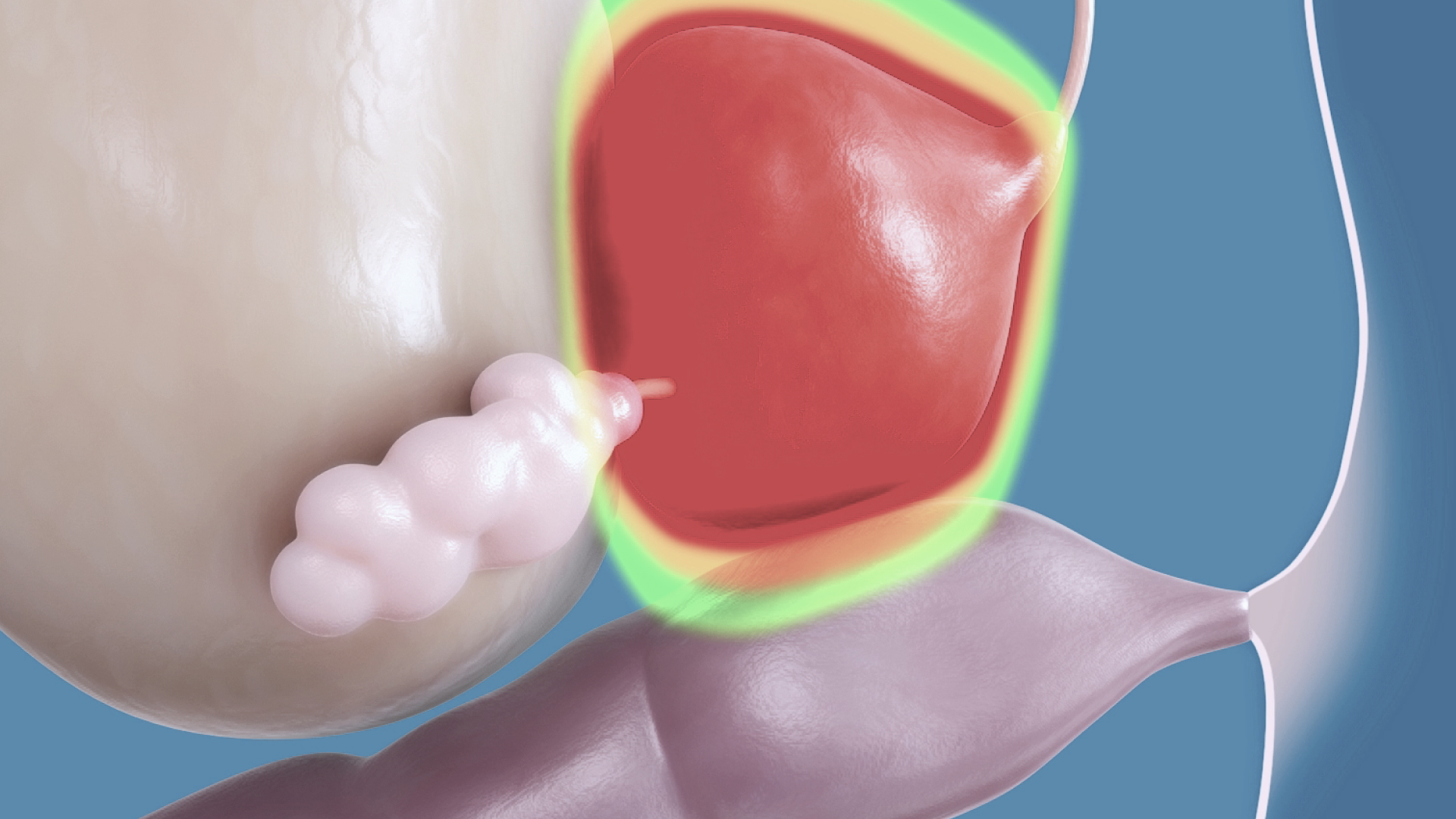
Radiation Treatment Is Highly Effective for Prostate Cancer
Excellent 10-year Survival Rates1
98% for low-risk disease
97% for intermediate-risk disease
90% for high-risk disease
Like all medical procedures, radiation treatment is not without potential side effects. While radiation destroys cancer cells, it can also affect the surrounding healthy tissues, potentially impacting function and quality of life. The good news is that there are ways to minimize these side effects.
Optimize your
radiation treatment
What Material Is the Balloon?
The balloon’s dissolvable material is similar to the surgical thread used for absorbable sutures. It remains in place during your radiation treatment and is gradually absorbed by the body over time.
How It Works
The BioProtect Balloon helps minimize radiation beams from reaching surrounding noncancerous tissues, minimizing treatment side effects.
The BioProtect Balloon Reduces Radiation Side Effects2
Your doctor has selected the advanced BioProtect Balloon to protect your healthy rectal tissue while you undergo radiation therapy for prostate cancer. Considerable clinical evidence supports the safety and effectiveness of the BioProtect Balloon.2 In an FDA clinical study, the BioProtect Balloon significantly reduced unwanted radiation exposure in 97.9% of patients.
You’ll join thousands of patients worldwide who have benefited from the BioProtect Balloon.



Protecting Patients from Rectal Toxicity
Rectal toxicity is a highly prevalent complication during prostate cancer radiation.
BioProtect Balloon Spacer Procedure
REFERENCES
1. Herr DJ, Elliott DA, Duchesne G, et al. Outcomes after definitive radiation therapy for localized prostate cancer in a national health care delivery system. Cancer. 2023;129(20):3326-3333. doi:10.1002/cncr.34916
2. BioProtect Balloon Implant™ System, FDA 510k Summary. Published August 25, 2023. https://www.accessdata.fda.gov/cdrh_docs/pdf22/K222972.pdf
